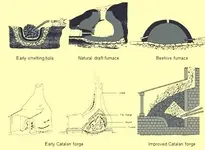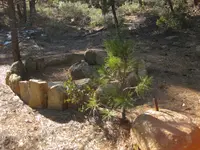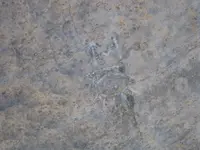sdcfia
Silver Member
Here's a map of the United States that shows land claimed by Spain, at one time or another. ... They also did some exploration in Georgia, North Carolina and Kentucky(?). There might have been some Spanish gold mining in northern Georgia and Alabama.
Some searchers claim these treasure vault sites were placed along the trails moving away from the mining areas. So that means they should have been heading toward Mexico City. This map shows a main trail going to Mexico City from New Mexico. This trail should have been loaded with vault sites.
As you know, I don't accept that the caches you're referring to are Spanish. A few minor ones throughout the Spanish period, yeah, sure, maybe here and there. Maybe some French too. Are there major precious metals hoards marked by complex coded signs executed by unnamed, off-the-radar Spanish from Mexico in the shadowy past? Possibly one or two (anything's possible), but overwhelmingly, huh-uh, IMO.
Spanish miners or Mexican miners? There's a big difference. The Spanish were professional contractors who spent their own money financing mining expeditions, which were expensive. Their efforts were well regulated and documented risks, controlled and taxed by the Crown. Very much on the radar. Nearly all their projects were in central Mexico, although in the later Spanish period they forayed somewhat into New Mexico and the southern Rockies (Colorado and Utah mostly, operating out of Santa Fe). Mexican miners were much less regulated, and their projects were less expensive since they were already settled near the Northern Frontier. There was more Mexican activity than Spanish in today's US. Many/most old Mexican sites were rediscovered by Anglos following the Spanish American War and worked by Americans. Did the Spanish and Mexicans mark their discoveries? Sure, but not with complex and arcane codes, but with simple, easy to recognize signs - maybe tree blazes, crude rock carvings, and other trail markers.
Did the Spanish and/or Mexican miners cache their spoils near their mines and return home empty-handed, planning on returning later to recover the loot? Why would they do this? They were already there in uncharted and risky locations, they had the manpower and means, they had the loot in hand and they were headed home anyway, so why bury it only to have to refinance yet another expedition later to finish the job? They already spent a lot of time and money, and cashed in on their gamble - why leave all the proceeds behind? And, theoretically, if they did leave it behind, why would we expect that they didn't come back later and recover it? This makes no sense to me.
The alleged Organized Cachers that you're asking about were secret off-the-radar guys, IMO. They might be any nationality, not representing any government but working for their own group(s) for their own reasons. They could have hidden and marked their caches any time between the 16th century and today. These caches may have been moved and re-marked at various times. The coded signs allegedly marking their caches seem to be complex and unsolvable. Whoever these guys were (are), they seem to be highly intelligent, well-heeled and powerful. If they exist at all, of course.








